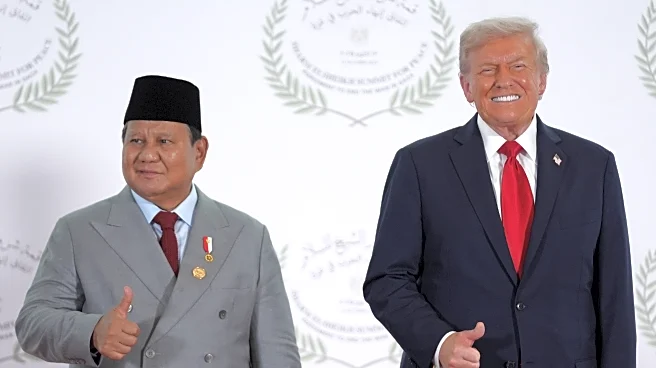What's Happening?
President Trump has introduced a 20-point peace plan aimed at achieving a ceasefire between Israel and Hamas in Gaza. The initiative comes after nearly two years of conflict, marked by significant violence
and instability in the region. Residents and visitors in Jerusalem have expressed skepticism about the plan's ability to bring lasting peace. The plan's reception in Jerusalem highlights the complexities and challenges of achieving a sustainable resolution in the ongoing Israel-Hamas conflict.
Why It's Important?
The skepticism surrounding President Trump's peace plan underscores the difficulties in resolving long-standing geopolitical conflicts. The plan's success or failure could have significant implications for U.S. foreign policy and its role in Middle Eastern diplomacy. A successful peace initiative could enhance U.S. influence in the region, while failure might lead to further instability and criticism of U.S. intervention strategies. The reactions in Jerusalem reflect broader concerns about the feasibility of external solutions to deeply rooted regional issues.
What's Next?
The next steps involve monitoring the implementation of the peace plan and assessing its impact on the ground. Key stakeholders, including Israeli and Palestinian leaders, will likely continue negotiations to address unresolved issues. The international community may also play a role in supporting or critiquing the plan's progress. The situation remains fluid, with potential for both diplomatic breakthroughs and setbacks.












